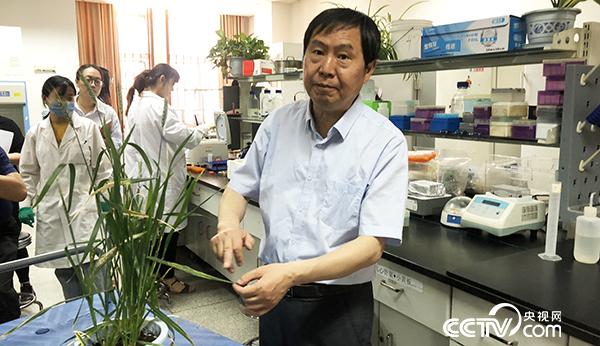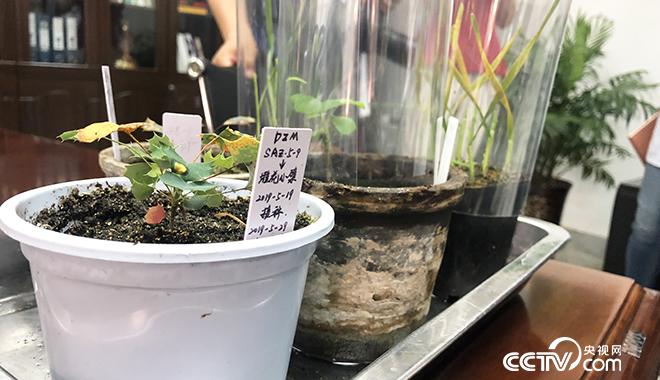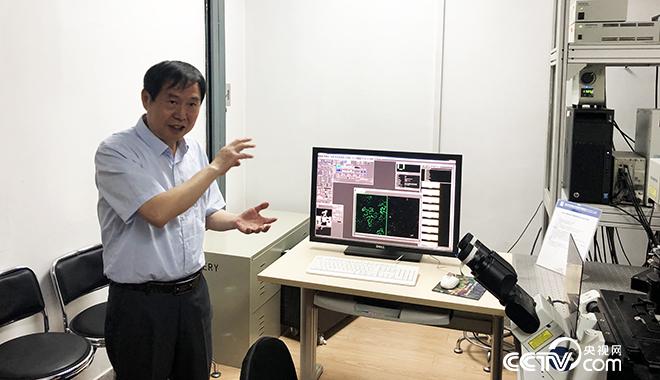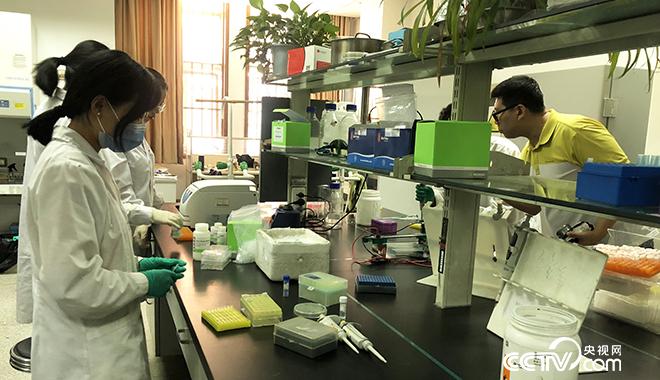CCTV News:In Yangling, Shaanxi, the birthplace of Chinese farming civilization, there is such a scientific researcher: he has been rooted in the northwest for more than 30 years and stuck to the yellow land. He is not a farmer, but better than a farmer.
He carried out research on the occurrence law and comprehensive control of wheat stripe rust, revealed the pathogenic variation path and mechanism of wheat stripe rust, made clear the causes of the prone areas of wheat stripe rust in summer in China, improved the understanding of the epidemic system of wheat stripe rust, and provided theoretical basis for comprehensive control of wheat stripe rust in China. The comprehensive control technology system of stripe rust in the prone areas in summer in China was constructed, and remarkable results were achieved through demonstration and application promotion, which effectively controlled stripe rust in China. The infection route and pathogenic mechanism of wheat scab were revealed, and the key period of disease prevention and control was determined, which provided theoretical basis and technical support for the prevention and control of wheat scab.

(Academician Kang Zhensheng introduced wheat stripe rust and its prevention to reporters. CCTV reporter Di Chenchen/photo)
"Wheat stripe rust and scab are major biological disasters that affect China’s food security and food safety. I came out of a wheat field, and my career is in a wheat field. " He is Kang Zhensheng, an academician of China Academy of Engineering, distinguished professor, a Changjiang scholar of the Ministry of Education, a doctoral supervisor, and the director of the State Key Laboratory of Crop Stress Biology in Arid Areas. In the research building of Northwest A&F University, CCTV reporter met Professor Kang Zhensheng and listened to him tell his own research story.
Germinate the long-cherished wish of "relying on science to help agriculture increase production and income"
Kang Zhensheng was born in Anyue, Sichuan in 1957. He was a famous "good student" from primary school to high school. In 1981, Kang Zhensheng became the first graduate student of the school after the reform of the enrollment system with excellent results and the first place in the graduation thesis grade. Kang Zhensheng, who was born in a farmer’s family, witnessed the huge losses caused by stripe rust to wheat production. His character of not being afraid of difficulties and being brave in exploration also made Kang Zhensheng sprout his long-cherished wish of relying on science to help agriculture increase production and income in the vast fields.
He began his research career under the guidance of Professor Li Zhenqi, a famous plant pathologist in China. Under the leadership of Li Zhenqi, Kang Zhensheng visited the key areas where wheat stripe rust occurred in Longnan, Longdong and Guanzhong of Shaanxi Province for many times.

(Northwest A&F University Artificial Climate Room CCTV reporter Di Chenchen/photo)
Through intensive investigation and repeated demonstration, they first discovered a new pathogenic strain of stripe rust, which seriously harmed the main wheat varieties in China, from thousands of analysis materials and infected wheat plants through a large number of analysis experiments and field inoculation, and made an accurate prediction on the development trend and harm of this strain. The prevention and control strategies and solutions put forward were adopted by agricultural production departments, which played an important guiding role in preventing and reducing the harm of wheat stripe rust. This achievement won the third prize of scientific and technological progress in Shaanxi Province in 1987.
Become a conqueror of "wheat cancer"
Wheat stripe rust, known as "wheat cancer", is a low-temperature fungal disease spread through the air, and it is one of the main public enemies of wheat production in the world, which often reduces wheat production by 10% to 30%, and even leads to wheat failure in serious cases.
For many years, Kang Zhensheng led the team to focus on the interaction between pathogenic fungi and host wheat, and to find out what caused the frequent changes of wheat stripe rust from the aspects of histology, cytology, molecular cytology and molecular biology.

(Wheat stripe rust in Academician Kang Zhensheng’s office and its parasitic Berberis CCTV reporter Di Chenchen/photo)
In order to find out the species of Berberis in the over-summer area of wheat stripe rust, Kang Zhensheng led his team members to travel all over the ravines of Gansu, Shaanxi, Sichuan and Yunnan provinces, and insisted on investigating the occurrence of wheat stripe rust. After a lot of field follow-up research, he sought the evidence that wheat stripe rust camped on Berberis in natural conditions and carried out experiments by using advanced scientific and technological means, and finally obtained a major discovery: sexual reproduction is the main pathogenic variation of wheat stripe rust in China. Wheat stripe rust is widely distributed in shrub leaves in northwest mountainous areas — — "Having children" on wild Berberis makes a new generation of germs become the "killer" of wheat varieties. On August 26, 2017, the research results were published in the top international academic journal Annual Review of Plant Pathology, which attracted wide attention at home and abroad.
Kang Zhensheng’s team established a technical system for forecasting wheat stripe rust in different places, and the accuracy of disease prediction was over 90%. The control technology system of "over-summer variable area" was established by taking measures such as crop structure adjustment, distribution of disease-resistant varieties, seed dressing with chemicals, winter spore isolation and Berberis treatment, which reduced the initial bacterial source of "over-summer variable area" by 40%, reduced the frequency of new races by 50% and extended the service life of disease-resistant varieties by 3-5 years, which played a key role in the effective control of stripe rust in China.

(Academician Kang Zhensheng explains agricultural research in the laboratory. CCTV reporter Di Chenchen/photo)
The research results benefit many countries and regions in the Belt and Road Initiative.
Wheat stripe rust is a serious biological disaster that affects the global wheat production safety for a long time. As the main academic leader of plant pathology in China, Kang Zhensheng led his team to make outstanding contributions to the research on the occurrence regularity, pathogenic mechanism and control technology of major diseases such as wheat stripe rust and scab. Kang Zhensheng promoted the establishment of "China Wheat Stripe Rust Germ Base Comprehensive Control Technology System", which was applied in 12 provinces, autonomous regions and municipalities in China, reducing the occurrence area of stripe rust by 50%, recovering more than 2 billion kilograms of grain losses every year, and increasing income and reducing expenditure by 4 billion yuan annually.

(Northwest A&F University Wheat-Stripe Rust Interaction Room CCTV reporter Di Chenchen/photo)
Since the "Belt and Road Initiative" was put forward, Kang Zhensheng’s team has successively cooperated with more than 10 countries and regions, including Kazakstan, Turkish and Ethiopian, collected and studied more than 1,300 standard samples of wheat stripe rust pathogens, and made China’s agricultural scientific research achievements with high quality and high yield of wheat "go abroad".
Today, Kang Zhensheng is still busy, but what he considers most now is to train young people, let them stand on their shoulders and grow up as soon as possible. "The work of revealing the genetic and molecular mechanism of virulence variation of Puccinia striiformis has just begun. In the future, while engaging in scientific research, we should train the young people behind us so that our agricultural science and technology can really run from the past to the leading stage." (Part of the data comes from Northwest A&F University)
关于作者